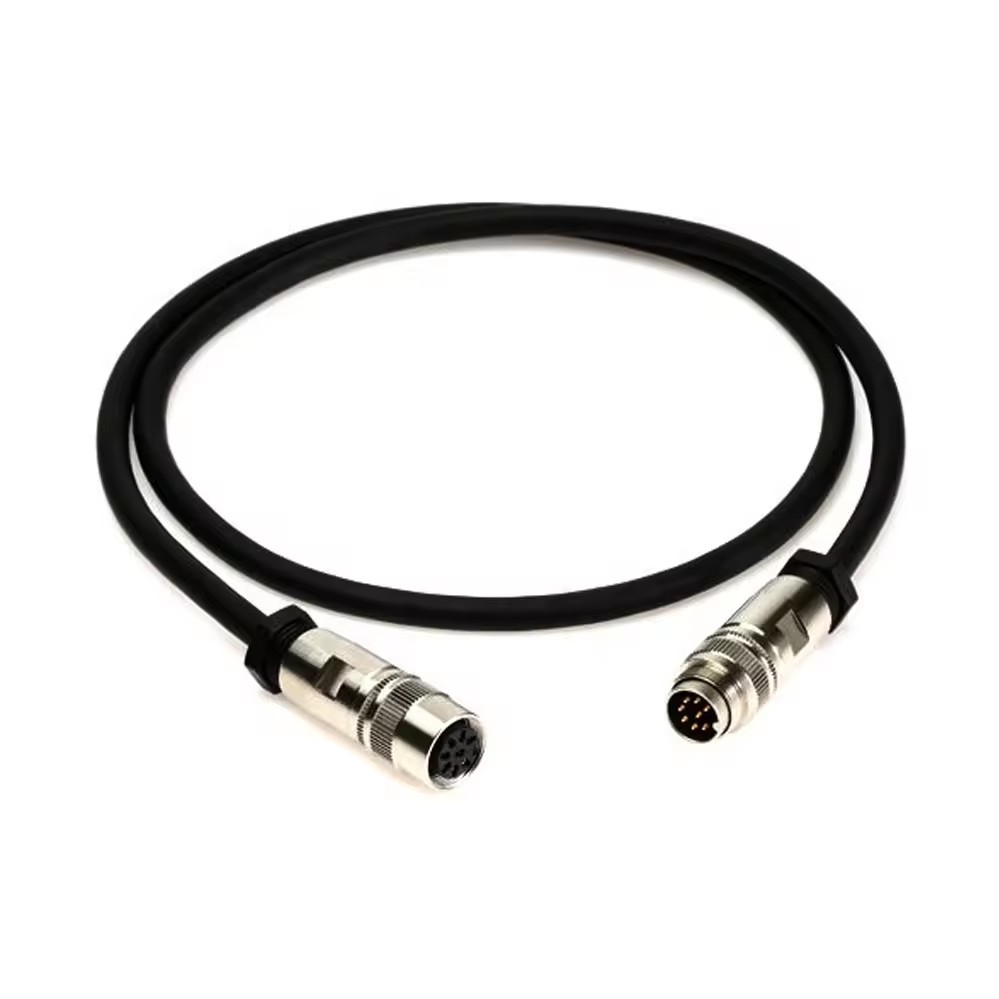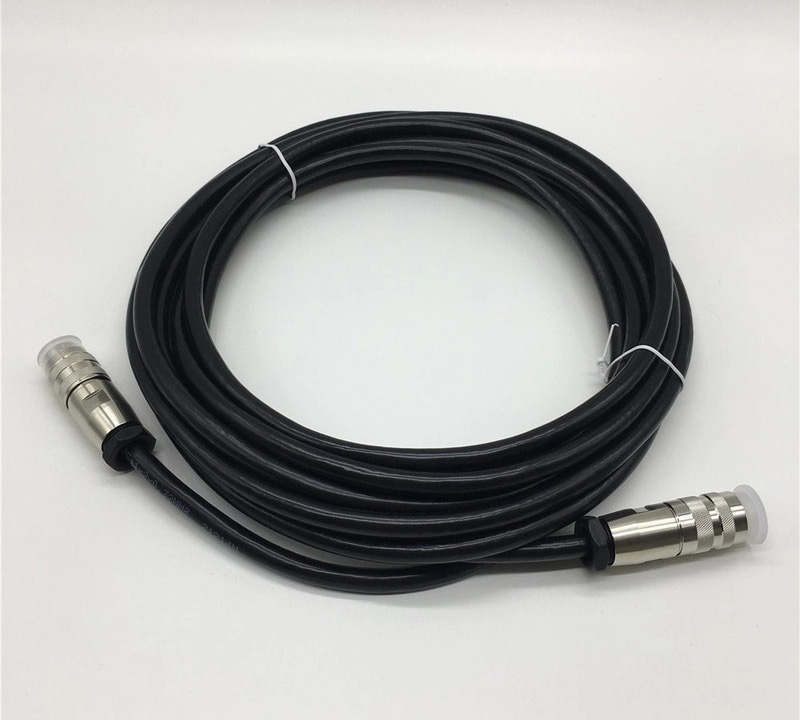Your AISG RET Control Cable Supplier
If you are looking for good quality AISG RET Control Cable then look no further, Bativ AISG RET Control Cable is your choice for your fast FTTA installation.
* Samples are FREE with same day shipping

Selected AISG RET Control Cables
As a benchmark to your AISG RET Control Cable sourcing, You can get better discount if you would order a good quantity, Please do not hesitate to contact us for any further assistance, We will be at your service without delay.
AISG communication waterproof connectors and cables, base station electricity line, RET RRU, RCU cable assemblies, AISG square flange connectors, LED outdoor waterproof connector, D-sub waterproof connector, continental DIN41612 connector, HM1/HM2 high-speed backplane connector, RF hight-frequency connectors series, IDC terminal connector and so on.

Bird Packing Prevention AISG RET Control Cable

Bird Packing Prevention AISG RET Control Cable

Bird Packing Prevention AISG RET Control Cable

Bird Packing Prevention AISG RET Control Cable

Bird Packing Prevention AISG RET Control Cable

Bird Packing Prevention AISG RET Control Cable

Bird Packing Prevention AISG RET Control Cable

Bird Packing Prevention AISG RET Control Cable

Bird Packing Prevention AISG RET Control Cable
Why Choose Us?
Supply you the right Flexible Squid Splitter Terminal at the right price without delay

Fast Delivery

7/24 Service

Competitive

Quality Assurance
Specifications
| AISG Connector A | 8-pin DIN Female |
| AISG Connector A Body Style | Straight |
| AISG Connector A Standard | IEC 60130-9 |
| AISG Connector B | 8-pin DIN Male |
| AISG Connector B Body Style | Straight |
| IEC 60130-9 | IEC 60130-9 |
| Color | Black |
| Data Conductor Type | 0.24 mm² (24 AWG) twisted pair |
| Power Conductor Type | 0.82 mm² (18 AWG) stranded |
| Total Conductors, quantity | 6 |
| Connecting tightening torque | 0.5 – 1 Nm, to be hand-tightened only |
| Dimensions | |
|---|---|
| Length | See Ordering Information |
| Diameter Over Jacket | 8 mm | 0.315 in |
| Electrical Specifications | |
|---|---|
| Protocol | AISG 2.0 |
| Voltage, maximum | 300 V |
| Environmental Specifications | |
|---|---|
| Operating Temperature | -40 °C to +70 °C (-40 °F to +158 °F) |
| Protection Class | IP 67 (connected) |
| Ordering Information: Part numberDescriptionWeight | ||
|---|---|---|
| 992100-CA005-SC | AISG Jumper Cable, M/F, 0.5 meters | .300 lb |
| 992100-CA010-SC | AISG Jumper Cable, M/F, 1.0 meters | .402 lb |
| 992100-CA013- SC | AISG Jumper Cable, M/F. 1.3 meters. | .532 lb |
| 992100-CA020-SC | AISG Jumper Cable, M/F, 2.0 meters | .590 lb |
| 992100-CA030-SC | AISG Jumper Cable, M/F, 3.0 meters | .778 lb |
| 992100-CA040-SC | AISG Jumper Cable, M/F, 4.0 meters | .964 lb |
| 992100-CA050-SC | AISG Jumper Cable, M/F, 5.0 meters | 1.182 lb |
| 992100-CA060-SC | AISG Jumper Cable, M/F, 6.0 meters | 1.364 lb |
| 992100-CA080-SC | AISG Jumper Cable, M/F, 8.0 meters | 1.896 lb |
| 992100-CA100-SC | AISG Jumper Cable, M/F, 10.0 meters | 2.295 l |
| 992100-CA120-SC | AISG Jumper Cable, M/F, 12.0 meters | 2.694 lb |
| 992100-CA200-SC | AISG Jumper Cable, M/F, 20.0 meters | 6.586 lb |
| 992100-CA300-SC | AISG Jumper Cable, M/F, 30.0 meters | 7.804 lb |
| 992100-CA400-SC | AISG Jumper Cable, M/F, 40.0 meters | 9.022 lb |
| 992100-CA500-SC | AISG Jumper Cable, M/F, 50.0 meters | 10.240 lb |
| 992100-CA600-SC | AISG Jumper Cable, M/F, 60.0 meters | 11.458 lb |
| 992100-CA700-SC | AISG Jumper Cable, M/F, 70.0 meters | 12.676 lb |
| 992100-CA800-SC | AISG Jumper Cable, M/F, 80.0 meters | 13.894 lb |
| 992100-CA900-SC | AISG Jumper Cable, M/F, 90.0 meters | 15.112 lb |
| 992100-CA1000-SC | AISG Jumper Cable, M/F, 100.0 meters | 16.330 lb |
FAQs
What are AISG RET Control Cables?
AISG interconnects are circular connectors and cables used in telecommunications to connect antennas, amplifiers, and sensors to controllers, usually base stations, such as in 5G networks and various cell tower equipment. AISG interconnects are named for the Europe-based Antenna Interface Standard Group, which develops the standards that define the physical and electrical characteristics of the AISG connector for RS-485 (AISG C485) (based on IEC 60130-9). The standards also define the communication protocol for the exchange of data between devices.
AISG interconnects are generally used in outdoor applications, thus requiring them to be waterproof (IP67 or better) and able to withstand harsh environmental conditions. The control infrastructure of subunits of antennas and antenna line devices (ALDs), such as RET units (remote electrical tilt), TMAs (tower mounted amplifiers), and various monitoring devices and sensors generally require a different connector layout/cable assembly. Products built using interconnects certified or compliant to the AISG standards ensure the interoperability of equipment from different manufacturers.
How to Choose AISG RET Control Cables?
Frequency Range
Determine the frequency range required for your specific application. Different cable assemblies are designed to handle different frequency ranges, so it’s important to choose one that meets your needs. Consider both the upper and lower frequency limits to ensure compatibility.
Cable Type
There are various types of RF cables available, such as coaxial cables, triaxial cables, and waveguide cables. Each type has its own characteristics and is suitable for different applications. Consider factors such as signal loss, power handling capability, and flexibility when selecting the cable type.
Connector Type
Choose the appropriate connector type for your application. Common connector types include SMA, N-type, BNC, and TNC. Ensure that the connector type matches the connectors on your equipment or devices to ensure proper compatibility and signal integrity.
Cable Length
Determine the required cable length based on the distance between the equipment or devices that need to be connected. It’s important to choose a cable length that is sufficient for your application without excessive signal loss.
Signal Loss
Consider the signal loss characteristics of the cable assembly. Signal loss, also known as insertion loss, is the reduction in signal strength as it travels through the cable. Lower signal loss is generally preferred, especially for high-frequency applications where signal integrity is critical.
Environmental Considerations
Consider the environmental conditions in which the cable assembly will be used. Factors such as temperature, moisture, and exposure to chemicals or UV radiation can affect the performance and durability of the cable. Choose a cable assembly that is designed to withstand the specific environmental conditions of your application.
Quality and Reliability
Ensure that the cable assembly is of high quality and manufactured by a reputable supplier. Look for cables that meet industry standards and certifications to ensure reliable performance and durability.
Cost
Consider your budget when selecting a cable assembly. While it’s important to choose a high-quality cable, it’s also important to find a balance between cost and performance. Compare prices from different suppliers and consider the overall value provided by the cable assembly.
What are the standards for AISG RET Control Cables?
AISG 1.1: This is the original version of the AISG standard. It defines the electrical and mechanical specifications for connectors, cables, and communication protocols used in controlling and monitoring antenna systems. AISG 1.1 connectors typically have 8 pins and use a circular connector design.
AISG 2.0: This is an updated version of the AISG standard that introduced new features and improvements. AISG 2.0 connectors also have 8 pins and use a circular connector design, but they have enhanced capabilities compared to AISG 1.1. AISG 2.0 connectors are backward compatible with AISG 1.1 connectors.
AISG 3.0: This is the latest version of the AISG standard. AISG 3.0 connectors have 9 pins and use a rectangular connector design. AISG 3.0 introduces additional features and improvements over previous versions, including higher data transfer rates and enhanced functionality.
It is important to ensure compatibility between the AISG connectors and the equipment they are being used with. Different versions of the AISG standard may have different pin configurations, communication protocols, and electrical specifications. It is recommended to consult the documentation and specifications provided by the manufacturer of the AISG connectors and the associated equipment to ensure proper compatibility and functionality.
What Is The Maximum Cable Length For AISG RET Control Cables?
The maximum cable length for AISG (Antenna Interface Standards Group) connectors depends on several factors, including the specific version of the AISG standard being used and the type of cable being used.
In general, the maximum cable length for AISG connectors is typically specified to be around 100 meters (328 feet). This length is based on the electrical characteristics and signal integrity requirements of the AISG communication protocol.
However, it is important to note that the actual maximum cable length can vary depending on factors such as the cable quality, signal attenuation, and environmental conditions. In some cases, signal repeaters or amplifiers may be required to extend the cable length beyond the standard limit.
What is the advantages of AISG RET Control Cables?
Standardization
AISG connectors adhere to the Antenna Interface Standards Group (AISG) protocol, ensuring compatibility and interoperability between different manufacturers’ equipment. This standardization simplifies the integration and interchangeability of components in antenna systems.
Control and Monitoring
AISG connectors enable bidirectional communication between base station equipment and antenna systems. This allows for remote control and monitoring of antenna parameters, such as tilt, azimuth, and electrical downtilt, optimizing the performance and coverage of the wireless network.
Reliable Communication
AISG connectors provide a robust and reliable communication interface for transmitting control signals and data between the base station and antenna system. This ensures accurate and timely information exchange, minimizing errors and improving system performance.
Easy Installation
AISG connectors are designed for easy installation, often featuring field-installable options. This simplifies the deployment and maintenance of antenna systems, reducing installation time and costs.
Multiple Mating Cycles
AISG connectors are designed for multiple mating and unmating cycles, allowing for repeated connections and disconnections without compromising performance or durability. This flexibility is particularly useful during system upgrades or maintenance activities.
Environmental Protection
Many AISG connectors are designed to withstand harsh environmental conditions. They may have waterproof or weatherproof features, such as IP67 or higher ratings, ensuring reliable operation in outdoor and challenging environments.
Versatility
AISG connectors can be used in various applications beyond antenna systems. They can be employed in devices that require control and monitoring using the AISG protocol, such as tower-mounted amplifiers, remote electrical tilt (RET) systems, and other RF equipment.
Compatibility with Different Cable Types
AISG connectors can be used with different cable types, including shielded twisted pair (STP) cables and coaxial cables. This flexibility allows for the use of existing infrastructure or the selection of the most suitable cable type for specific installation requirements.
Enhanced Network Optimization
By enabling remote control and monitoring of antenna systems, AISG connectors facilitate network optimization. Operators can adjust antenna parameters in real-time, improving signal quality, coverage, and capacity, leading to better overall network performance.
What is the application of AISG RET Control Cables?
Base Station Antennas
AISG connectors are commonly used to connect base station antennas to the control unit or base station equipment. These connectors enable the transmission of power, data, and control signals between the antenna and the control unit.
Remote Electrical Tilt (RET) Systems
AISG connectors play a crucial role in RET systems, which allow for remote adjustment of the electrical tilt angle of antennas. The connectors facilitate the communication between the control unit and the RET motor, enabling precise control and adjustment of the antenna tilt.
Tower Mounted Amplifiers (TMAs)
TMAs are used to amplify and improve the signal quality in wireless communication systems. AISG connectors are used to connect the TMA to the base station equipment, allowing for power and control signal transmission.
Tower Mounted Remote Electrical Tilt (TRE) Systems
Similar to RET systems, TRE systems also require AISG connectors to enable remote electrical tilt adjustment of antennas mounted on towers. The connectors facilitate communication between the control unit and the TRE motor, allowing for precise tilt control.
Distributed Antenna Systems (DAS)
AISG connectors are used in DAS installations to connect the various components of the system, including antennas, amplifiers, and control units. These connectors enable the transmission of power, data, and control signals throughout the DAS network.
Small Cell Systems
AISG connectors are utilized in small cell systems, which are compact and low-power cellular base stations. The connectors enable the connection between the small cell equipment and the antennas, facilitating power and control signal transmission.
Get A Quick Quote
Bativ Services Always Go Extra Mile
OEM & ODM Available
Whether you want to have your logo on package or want to custom it differently, we can help you.
Lighting Fast Delivery
If you are no in need of special fiber optic products, just the finished product, The inventory will be of fast delivery.
Start With Low MOQ
If you want to wholesale fiber optic products, we support a minimum order quantity of 1 pcs for the first order.
Trusted by Big brands since 2010





